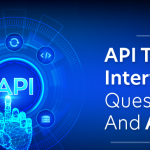Power Query vs. DAX: Unraveling Data Modeling and Analysis
In the realm of data manipulation and analysis, Microsoft Power Query and Data Analysis Expressions (DAX) are two pivotal tools that play distinct yet complementary roles within the Microsoft ecosystem. This article delves into the depths of Power Query and DAX, exploring their features, use cases, and how they collaborate to empower users in data management and analysis.
Power Query: Mastering Data Transformation
Key Features of Power Query:
Data Connectivity: Power Query effortlessly connects to diverse data sources like databases, Excel, CSV, and JSON, streamlining data extraction.
Data Transformation: It excels in data cleansing, merging, pivoting, and aggregation, fostering data preparation for analysis and reporting.
Applied Steps: The platform records each transformation step, ensuring ease of modification and repetition for future tasks.
M Formula Language: Power Query employs the M formula language, enabling users to define data transformations in a flexible and extensible manner.
DAX: Enabling Data Analysis Dynamics
Key Features of DAX:
Calculations: DAX equips users with a spectrum of functions to create custom calculations and aggregations, enhancing analytical capabilities.
Contextual Calculations: This feature enables calculations to adapt based on user selections or filters, delivering contextually relevant insights.
Time Intelligence: DAX provides specialized functions for time-based calculations like year-to-date or moving averages.
Relationship Awareness: Leveraging defined relationships within data models, DAX facilitates calculations across related tables.
http://informationarray.com/2023/08/08/splunk-vs-dynatrace-a-detailed-comparison/
Power Query and DAX: A Symbiotic Relationship
While Power Query and DAX fulfill distinct purposes, their synergy often leads to comprehensive data analysis. Power Query’s data transformation prowess readies data for analysis, ensuring it’s cleaned and shaped optimally. This data is then loaded into data models where DAX comes into play, performing calculations, and crafting insights.
Exploring Use Cases:
Data Transformation:
Power Query: Extracts and harmonizes sales data from multiple Excel spreadsheets, creating a unified dataset for analysis by merging, filtering, and transforming.
DAX: Computes the rolling average of stock prices over the past 30 days, catering to nuanced calculations within an existing data model.
Calculation and Aggregation:
Power Query: Summarizes overall revenue by product category through data grouping and aggregation.
DAX: Calculates the employee turnover rate by dividing total employees by those who left, offering insights for HR analysis.
Data Modeling:
Power Query: Merges data from diverse sources into a cohesive data model, fostering seamless relationships and interactions.
DAX: Constructs profitability metrics for products, integrating with a data model to provide comprehensive insights.
In the universe of data analysis, Power Query and DAX stand as formidable tools, each pivotal in its own domain. Power Query primes data for analysis, while DAX reigns in the realm of calculations and insights. Harnessing their combined capabilities equips users with a holistic approach to data modeling and analytics.
As you traverse the data analysis landscape, keep in mind the symbiotic relationship between Power Query and DAX. Whether it’s cleansing data or crafting complex calculations, this dynamic duo empowers you to unlock the full potential of data-driven decision-making.








